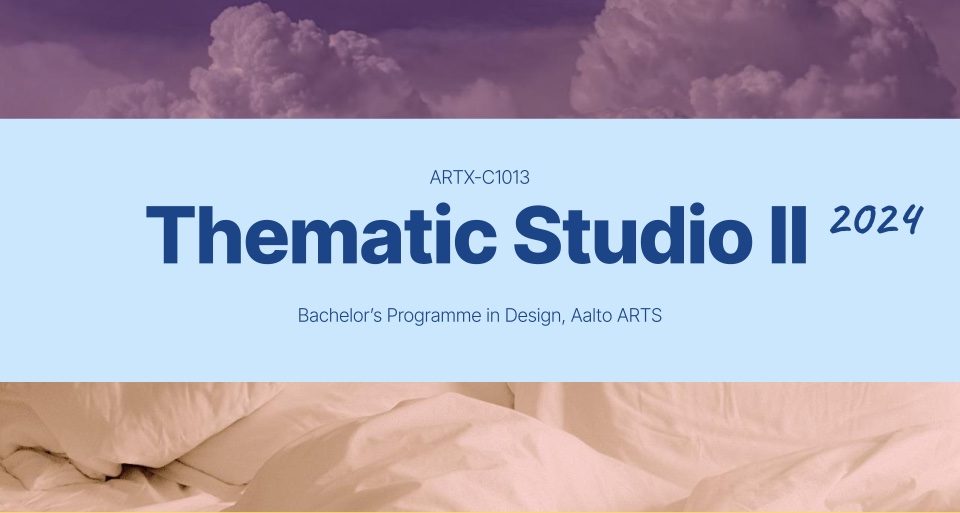
LEARNING OUTCOMES
Students who successfully complete this course should be able to:
- use artistic, scientific and research methods to set goals and directions for their work when designing with and for systems.
- position users and their interests within broader communities of people and societal systems.
- explore systems, relationships and flows for use in design.
- turn ideas into coherent presentations of concepts and prototypes.
- Work in a group setting towards shared design goals.
Credits: 12
Schedule: 09.01.2024 - 18.04.2024
Teacher in charge (valid for whole curriculum period):
Teacher in charge (applies in this implementation): Antti Hietaniemi
Contact information for the course (applies in this implementation):
CEFR level (valid for whole curriculum period):
Language of instruction and studies (applies in this implementation):
Teaching language: English. Languages of study attainment: English
CONTENT, ASSESSMENT AND WORKLOAD
Content
valid for whole curriculum period:
In this studio course, students explore contemporary phenomena through thematically-framed design projects. The course is organized in tandem with Thematic Studio I with the same theme(s) being explored by students in the two courses. In smaller groups, students work collaboratively in articulating design challenges in relation to the yearly theme and in devising solutions to real-world problems. Building on what the students have learnt in Thematic Studio I, the course supports students in acquiring knowledge and skills to organize design work as a group and in taking a systems view when designing. Students learn systematic ways of finding and utilizing users- and systems-related data, creating concepts and, finally, turning the concept into an early prototype that can be tested with users.
The contact teaching in the course is organized around a combination of assignments, lectures, tutoring and workshops. The typical format of a week includes an introductory lecture with examples and small hands-on exercises, followed by independent group work, documented in a report and supported by tutoring, and finally presenting the results to others.
Assessment Methods and Criteria
valid for whole curriculum period:
To pass the course, students need to complete the given group assignments, actively participate in class, create a concept and an early prototype, and document their progress in a report. Grades will be based on the successful completion of the steps, the quality of the report and the design outcome.
Workload
valid for whole curriculum period:
The total workload for the course amounts to 324 hours, consisting of 100 hours of lectures, hands-on exercises and presentations in class, 20 hours of tutoring and 200 hours of independent group work.
DETAILS
Study Material
valid for whole curriculum period:
Readings as provided in class.
Substitutes for Courses
valid for whole curriculum period:
Prerequisites
valid for whole curriculum period:
SDG: Sustainable Development Goals
12 Responsible Production and Consumption
FURTHER INFORMATION
Further Information
valid for whole curriculum period:
Teaching Language : English
Teaching Period : 2022-2023 Spring III - IV
2023-2024 Spring III - IVEnrollment :
The course is organized with 30 study places in 2022/2023 and 46 study places in 2023/2024.
A minimum of 20 students are required for running the course.
Registration for Courses: Sisu. Priority order to courses is according to the order of priority decided by the Academic committee for School of Arts, Design and Architecture: https://www.aalto.fi/en/services/registering-to-courses-and-the-order-of-priority-at-aalto-arts
